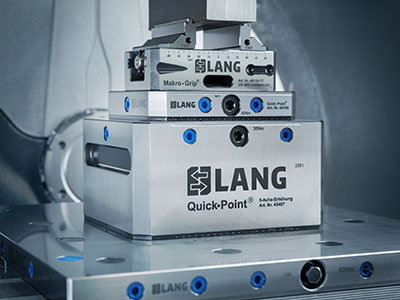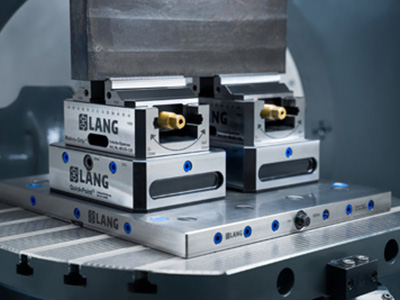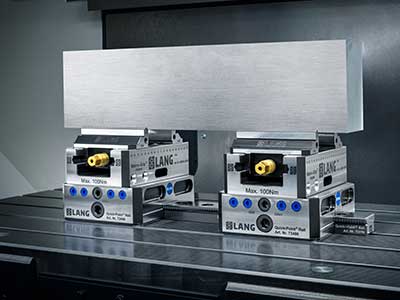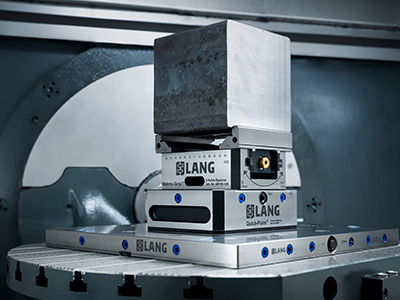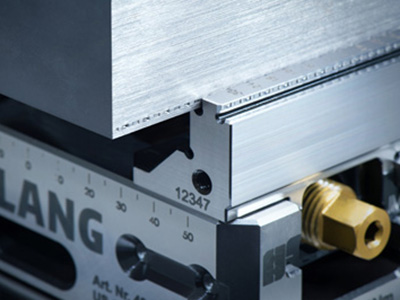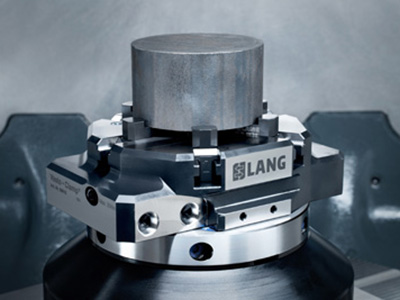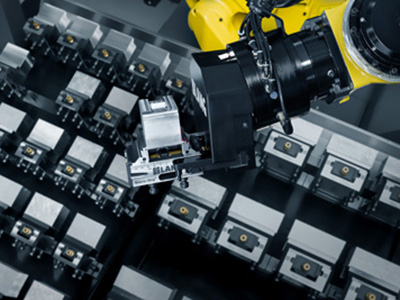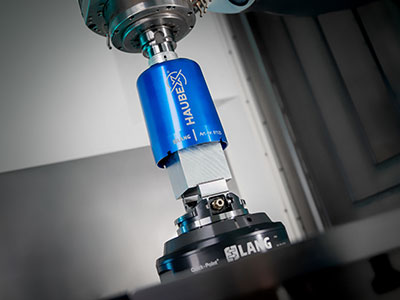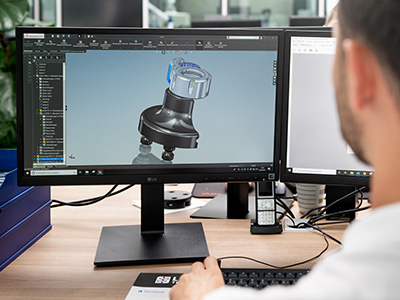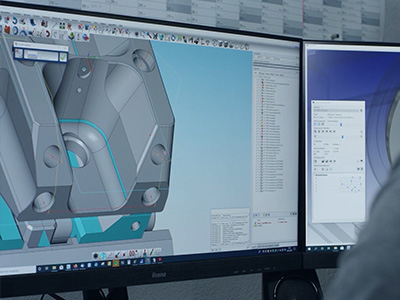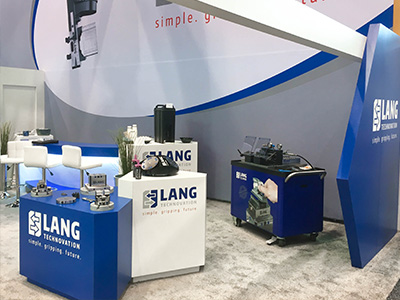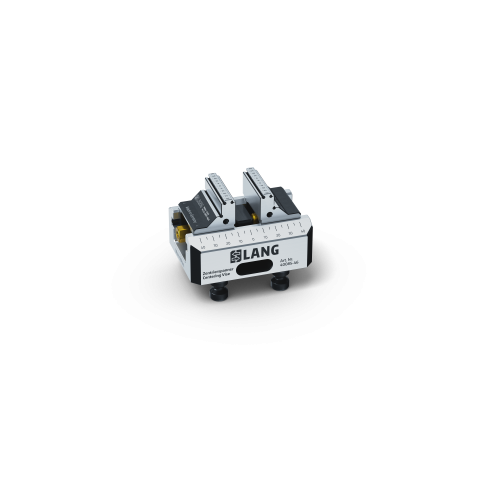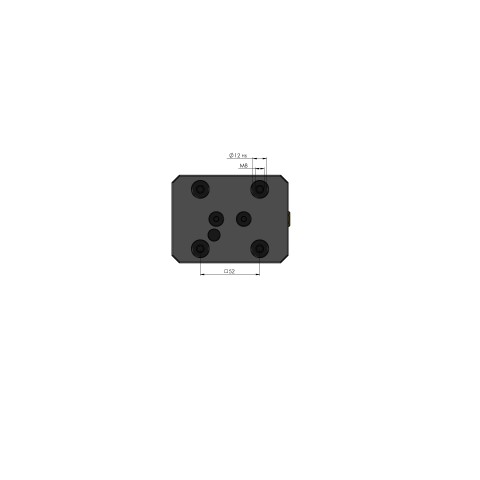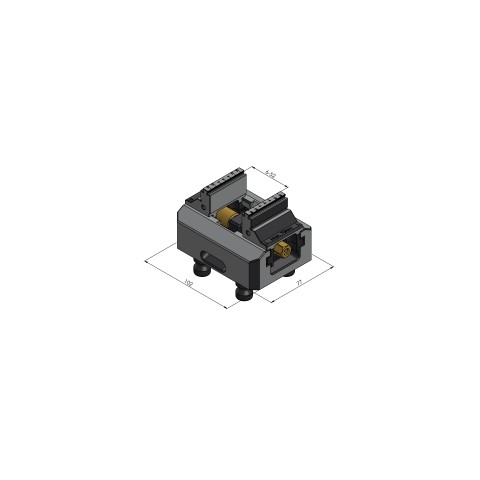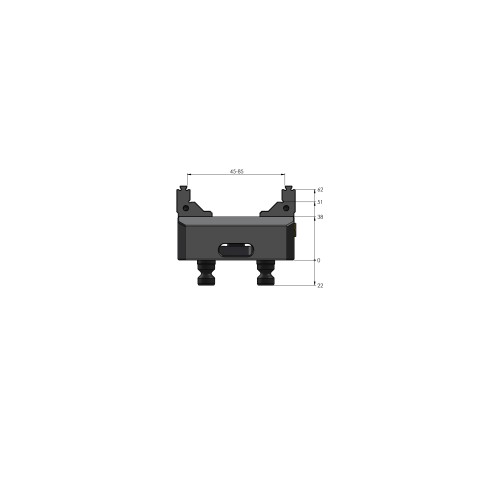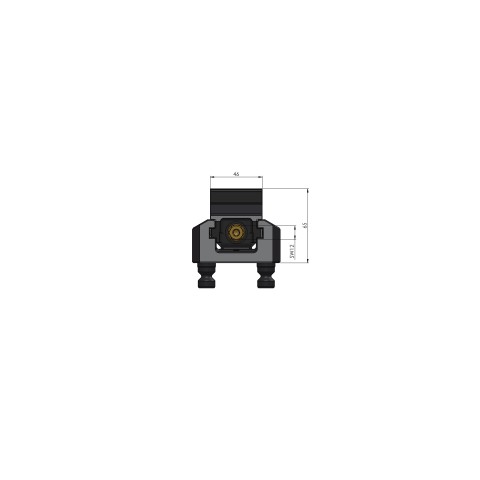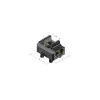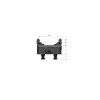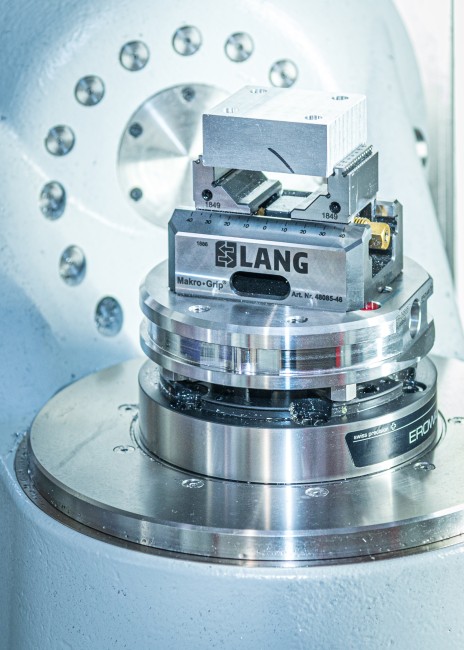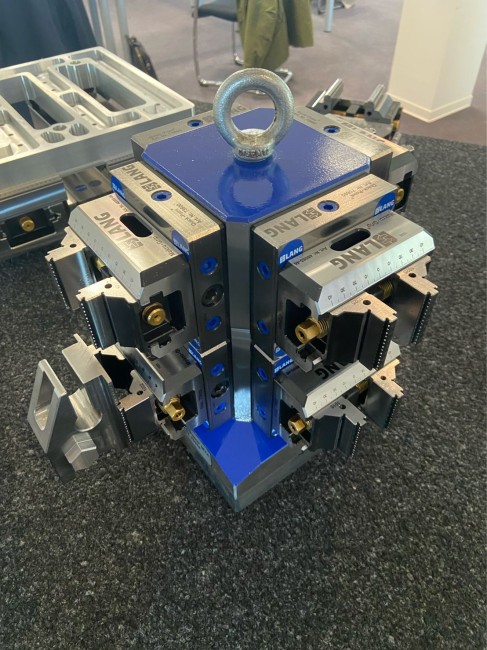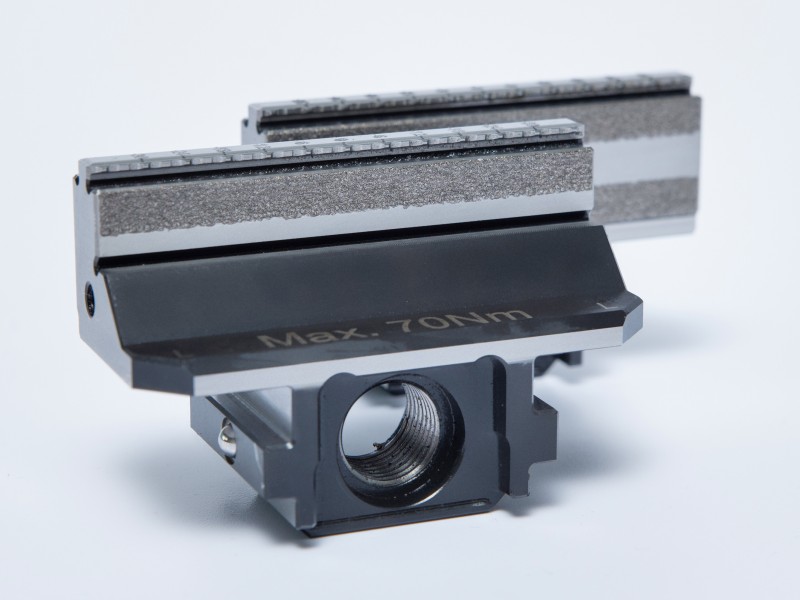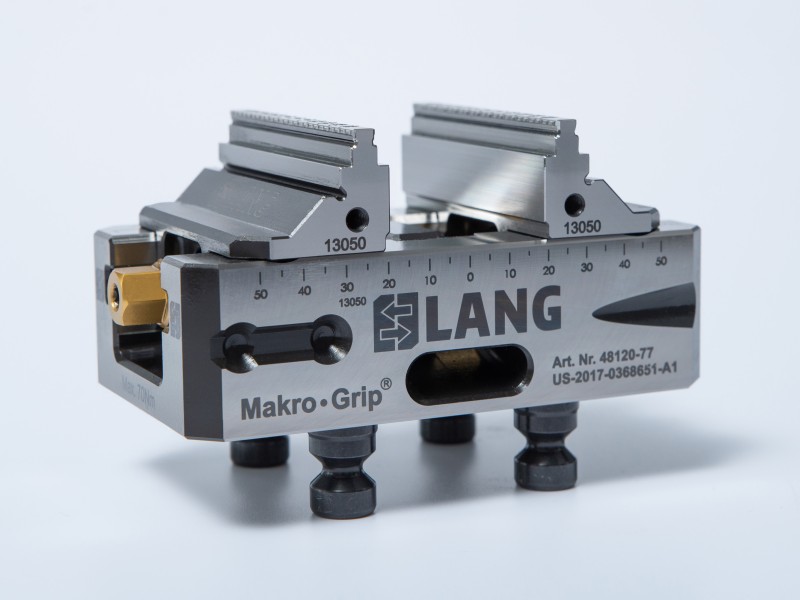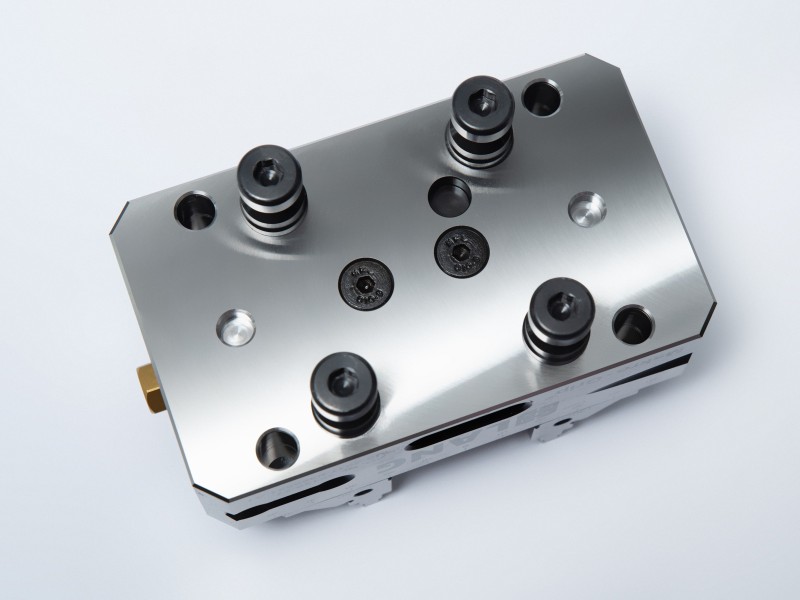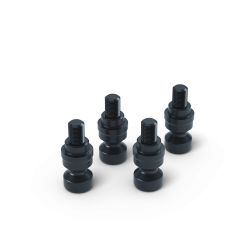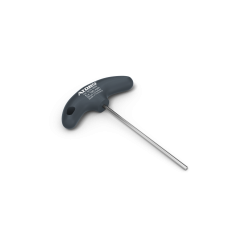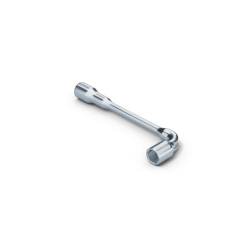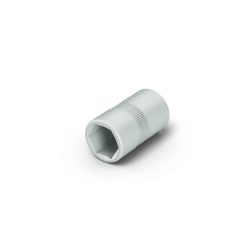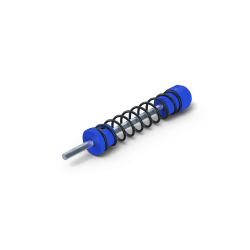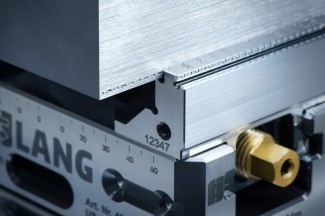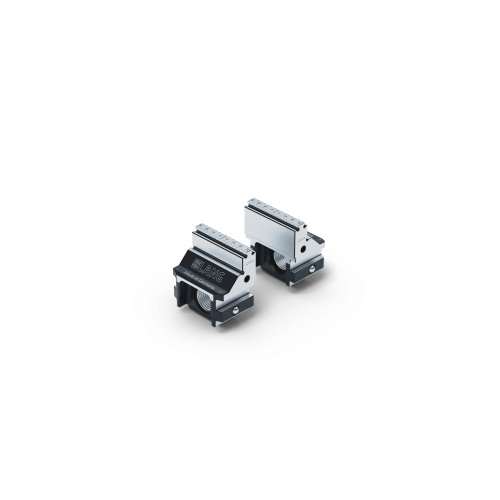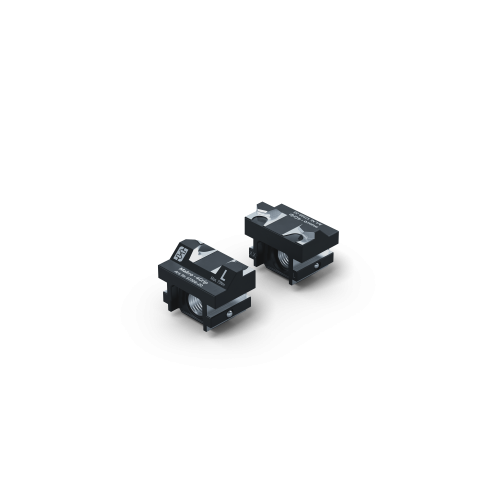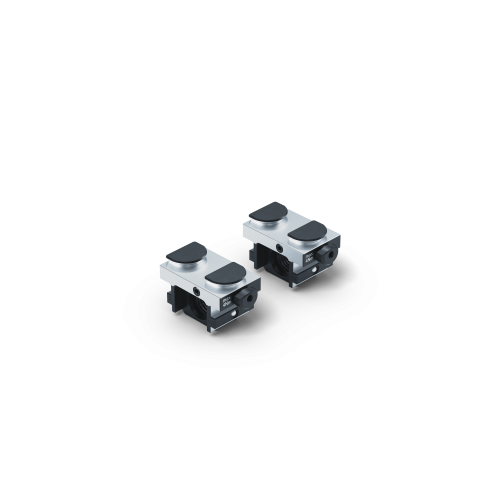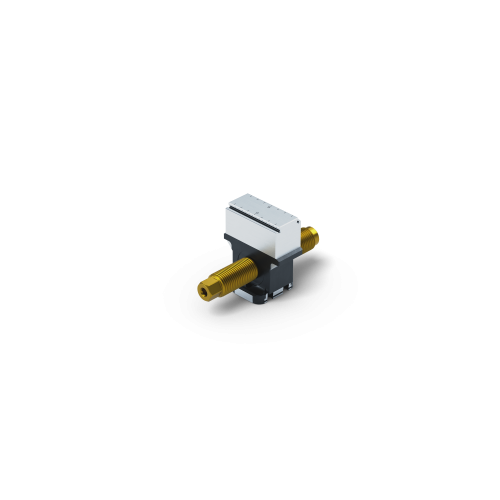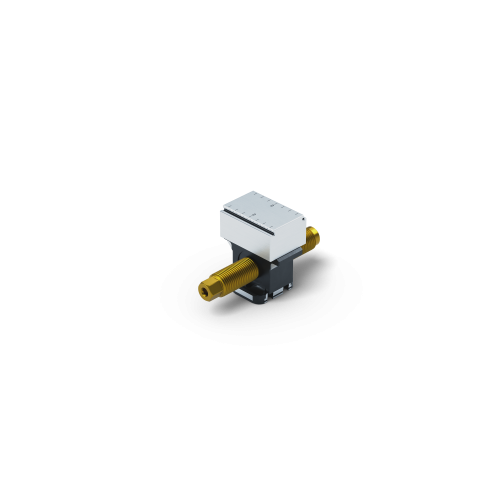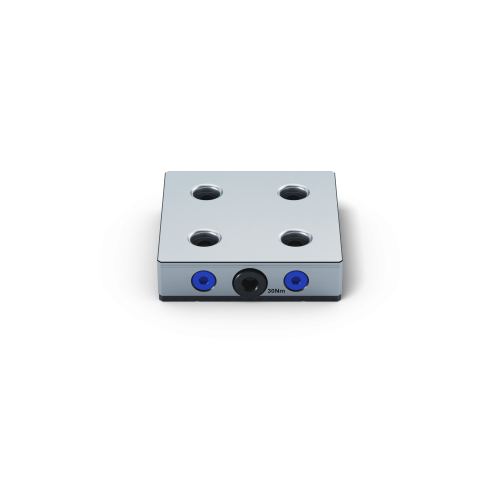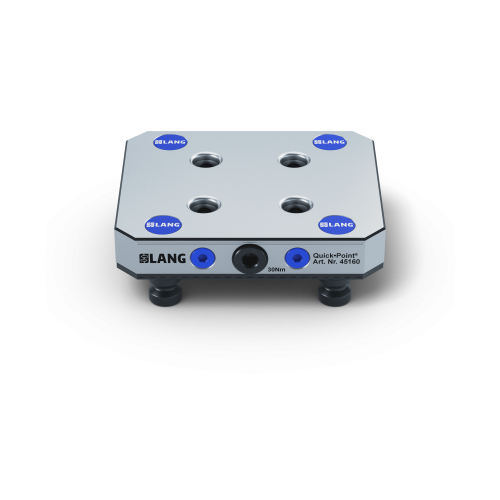Key data at a glance
The Makro•Grip® 5-axis vise is the ideal clamping device for the 5-axis machining of blank parts. Due to its compactness and low interference contours, it offers best accessibility to the workpiece. Thanks to the form-closure clamping principle, which requires only a low level of clamping pressure and can, therefore, be clamped without distortion or wear, it achieves the highest holding forces and guarantees maximum process reliability, even with high-tensile material.
More features:
Single components features:
Spare Jaws
Spindle + Center Piece
Clamping Studs
Makro•Grip® Stamping Technology and Raw Part Clamping
The Makro•Grip® 5-Axis Vise and its unique benefits of the stamping technology has been considered „The Original“ and a benchmark in the 5-face machining of raw parts for years. Its compact design and high holding forces make the Makro•Grip® 5-Axis Vise the ideal clamping device for machining raw parts.
- Holding force Thanks to the form-fit clamping principle, highest holding forces can be achieved with Makro•Grip®, even at low clamping pressure.
- Process reliability Clamping with Makro•Grip® provides maximum process reliability and is easy on the workpiece to be processes at the same time.
- Accessibility The compact Makro•Grip® self-centering vises guarantee ideal accessibility in the 5-axis machining of raw parts.
Learn all about the benefits and functionality of ourMakro•Grip® Raw Part Clamping and Stamping Technology.
Discover nowApplication pictures
Services
We will be happy to advise you individually and adapt your products for the best possible application.
Tungsten-Carbide-Coating
A special Tungsten-Carbide Coating can be applied on the plain clamping surfaces of the Mak-ro•Grip® jaws in order to double the friction force when clamping non-stamped parts, without leaving any traces on the workpiece.
Modified Clamping depth
Sometimes raw material has a certain radius, which makes it hard to clamp it on the 3 mm step of the Makro•Grip® jaws. This can be solved by lowering the clamping step so that the workpie-ce is held above the radius. On the one hand, this provides a resting surface for the workpice, on the other hand it ensures safe clamping.



